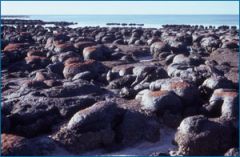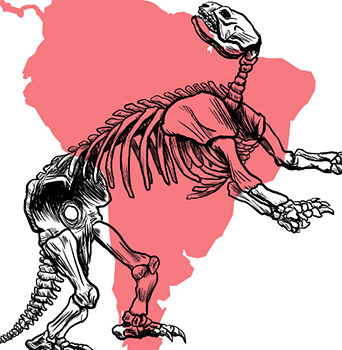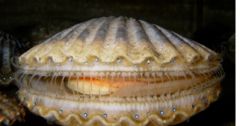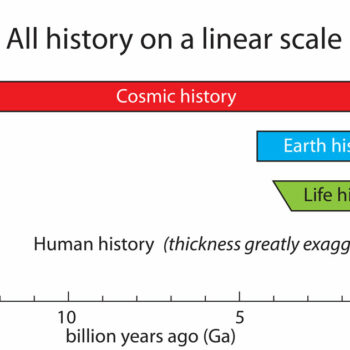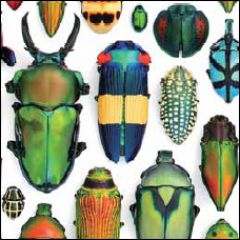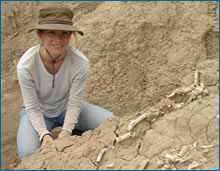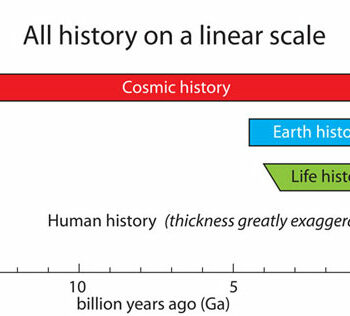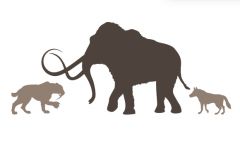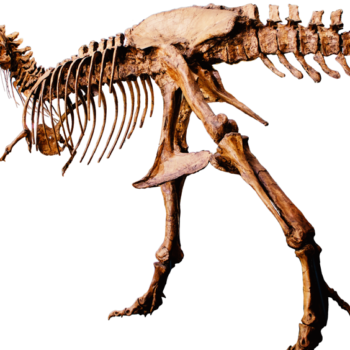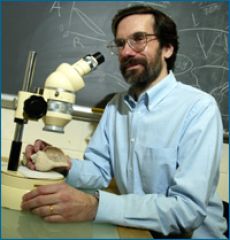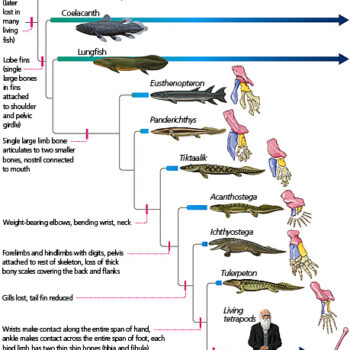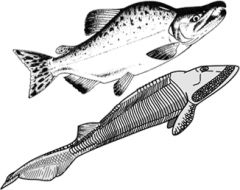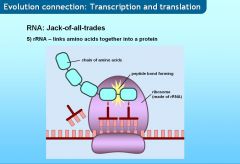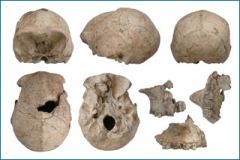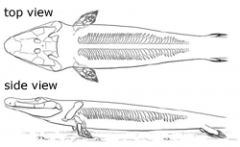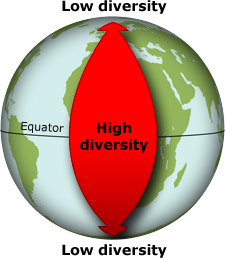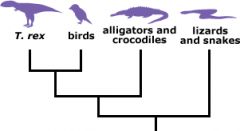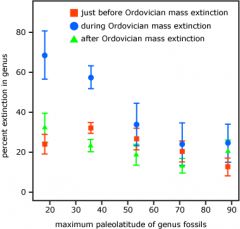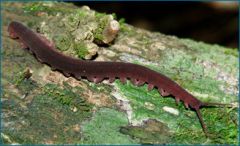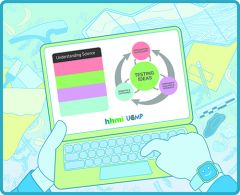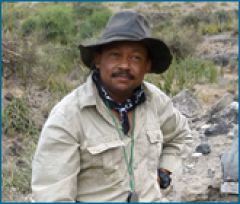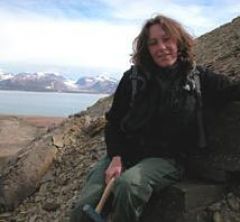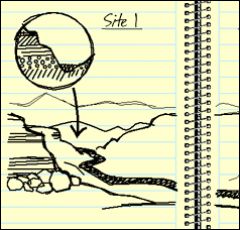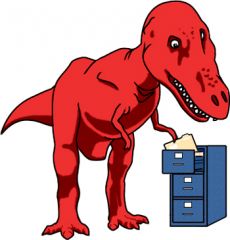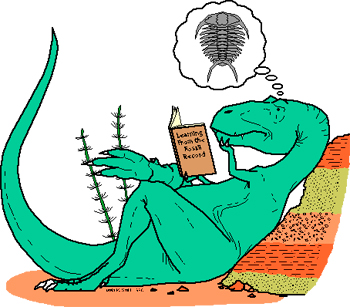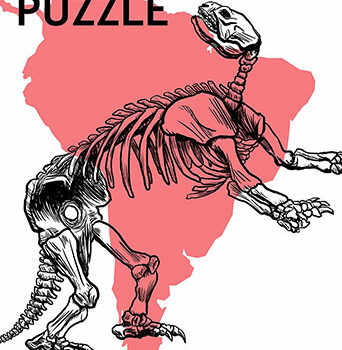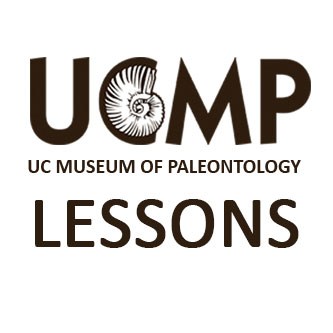Search by:
Found 34 resources:
Del caldo primigenio a las células: El origen de la vida
Grade Level(s):
- 9-12
Source:
- UC Museum of Paleontology
Resource type:
- Tutorial
Time: 20 minutes
Overview
Profundiza en los conocimientos actuales sobre el origen de la vida y en cómo los científicos y las científicas son capaces de investigar en los detalles de acontecimientos tan antiguos.
Un rompecabezas Pleistoceno: Extinctión en América del Sur
Grade Level(s):
- 6-8
- 9-12
Source:
- UC Museum of Paleontology
Resource type:
- Comic
Time: 20 minutes
Overview
En este comic podrás seguir la investigación que hicieron María y Miguel para resolver un misterio paleontológico. Hace más de 11000 años, más del 80% de las especies de grandes animales de Sudamérica se extinguieron. ¿Por qué pasó? (Disponible en inglés, español y portugués.)
Exploring KT extinction patterns
Grade Level(s):
- 13-16
Source:
- UC Museum of Paleontology
Resource type:
- Lab activity
Time: 2-3 hours
Overview
Students will be introduced to a data set about mollusk genera that survived and did not survive the KT extinction event. They will formulate hypotheses regarding extinction patterns and mechanisms and analyze the data for evidence relevant to those hypotheses.
From soup to cells – The origin of life
Grade Level(s):
- 9-12
Source:
- UC Museum of Paleontology
Resource type:
- Tutorial
Time: 20 minutes
Overview
Delve into our current understandings of the origins of life and how scientists are able to investigate the details of such ancient events.
This article is located within Evolution 101.
ChronoZoom
Grade Level(s):
- 13-16
Source:
- The ChronoZoom Team
Resource type:
- Infographic
Time: 1-6 hours
Overview
"Big History" is the currently active effort to bring together in a unified way all of the information about the past, both humanistic and scientific. One of the problems for anyone teaching Earth history or Big History is how to help students (or anyone) to comprehend the time scales. This series of graphic panels helps address this challenge by presenting Big History in a sequence of time scales.
Radiations and extinctions: Biodiversity through the ages
Grade Level(s):
- 13-16
Source:
- Zimmer, Carl
Resource type:
- Article
Time: 1.5 hours
Overview
This excerpted chapter from Carl Zimmer's book, The Tangled Bank, describes the evolutionary processes responsible for large scale patterns in the diversity of life through time. Reprinted with the permission of Roberts and Company Publishers, Inc.
This resource is available from the National Center for Science Education.
The genes that lie beneath: The work of Leslea Hlusko
Grade Level(s):
- 9-12
- 13-16
Source:
- UC Museum of Paleontology
Resource type:
- Research profile
Time: 40 minutes
Overview
Evolutionary biologist Leslea Hlusko's research takes her from the deserts of Ethiopia, where she hunts for hominid and primate fossils, to a baboon colony in San Antonio where she takes thousands of measurements of the primates' imposing canines. This research profile describes how the two projects are linked by a hunt for genetic variation, a key component of natural selection.
The ChronoZoom Time Atlas of Earth History and Big History
Grade Level(s):
- 13-16
Source:
- UC Museum of Paleontology
Resource type:
- Article
Time: 1 hour
Overview
This resource presents Big History in a sequence of time scales through graphic panels. Each panel is accompanied by a page of text, discussing the historical features shown in the panel.
McKittrick Fossil Find Classroom Activity
Grade Level(s):
- 3-5
- 6-8
- 9-12
Source:
- UC Museum of Paleontology
Resource type:
- Classroom activity
Time: 50 minutes
Overview
In this lesson, students play the roles of paleontologists on a dig. They “unearth” a few fossils at a time and attempt to reconstruct the animal the fossils represent.
Mass extinction
Grade Level(s):
- 9-12
- 13-16
Source:
- UC Museum of Paleontology
Resource type:
- Tutorial
Time: 30 minutes
Overview
Usually, extinction operates at a fairly constant rate, culling some species while speciation generates new ones. However, at a few points in life's history the humdrum of regular extinction has been interrupted by mass extinctions. Learn more about these biodiversity crises.
It takes teamwork: How endosymbiosis changed life on Earth
Grade Level(s):
- 9-12
- 13-16
Source:
- UC Museum of Paleontology
Resource type:
- Article
Time: 30-40 minutes
Overview
You might be surprised to learn that descendants of an ancient bacterium are living in every cell of your body! Find out how endosymbiosis factored into the evolution of your own cells and learn about a modern example of this process.
How to survive a mass extinction: The work of David Jablonski
Grade Level(s):
- 9-12
- 13-16
Source:
- UC Museum of Paleontology
Resource type:
- Research profile
Time: 40 minutes
Overview
Through detailed analysis of patterns in the fossil record, scientist David Jablonski reconstructs the rules that helped dictate who lived and died in past mass extinctions. This research profile describes his surprising discoveries and their disturbing implications for the biodiversity crisis today.
How Did Plants Change Our Planet?
Grade Level(s):
- 3-5
- 6-8
- 9-12
Source:
- California Academy of Sciences
Resource type:
- Video
Time: 5 minutes
Overview
Botanist Dr. Nathalie Nagalingum explains how, more than 400 million years ago, early plants played a notable role in adjusting Earth's physical surface as well as our planet's climate. She meets with paleobotanist Dr. Cindy Looy to discuss the evidence that scientists currently have to support her story.
Understanding Macroevolution Through Evograms
Grade Level(s):
- 9-12
- 13-16
Source:
- UC Museum of Paleontology
Resource type:
- Article
Time: 1 hour
Overview
Evograms convey information about how a group of organisms and their particular features evolved. This article explains how to read evograms and delves into the evolutionary history of whales, tetrapods, mammals, birds, and humans.
Extinction
Grade Level(s):
- K-2
Source:
- Janulaw, Sharon
Resource type:
- Classroom activity
Time: 20 minutes
Overview
Students are shown illustrations of living things and extinct life forms, which they compare and categorize as living or extinct.
Evolution connection: Transcription and translation
Grade Level(s):
- 13-16
Source:
- UC Museum of Paleontology
Resource type:
Time: 5 minutes
Overview
This short slide set relates the role of RNA in the processes of transcription and translation to RNA's evolutionary history and the remnants of the RNA world. Save the slide set to your computer to view the explanation and notes that go along with each slide.
Evo in the news: Where species come from
Grade Level(s):
- 9-12
- 13-16
Source:
- UC Museum of Paleontology
Resource type:
- Evo in the News article
Time: 15 minutes
Overview
Lush tropical ecosystems house many times more species than temperate or Arctic regions. This news brief from November 2006 discusses the evolutionary explanation for this diversity trend and reveals why threats to tropical ecosystems may threaten diversity on a global scale.
Evo in the news: When it comes to evolution, headlines often get it wrong
Grade Level(s):
- 9-12
- 13-16
Source:
- UC Museum of Paleontology
Resource type:
- Evo in the News article
Time: 15 minutes
Overview
Newly discovered fossils are prompting some scientists to consider a minor revision of the relationships shown on the human family tree. This news brief from September 2007 clarifies the occasionally misleading news coverage of the story.
Evo in the news: What has the head of a crocodile and the gills of a fish?
Grade Level(s):
- 9-12
- 13-16
Source:
- UC Museum of Paleontology
Resource type:
- Evo in the News article
Time: 15 minutes
Overview
This news brief, from May 2006, reviews what is likely to be the most important fossil find of the year: Tiktaalik helps us understand how our own ancestors crawled out of the water and began to walk on dry land.
Visualizing life on Earth: Data interpretation in evolution
Grade Level(s):
- 9-12
- 13-16
Source:
- UC Museum of Paleontology
Resource type:
- Online activity or lab
Time: 2 hours
Overview
This web-based module leads students through an exploration of the patterns in the diversity of life across planet Earth. Students are scaffolded as they practice data interpretation and scientific reasoning skills.
Evo in the news: The evidence lines up in early mammal evolution
Grade Level(s):
- 9-12
- 13-16
Source:
- UC Museum of Paleontology
Resource type:
- Evo in the News article
Time: 15 minutes
Overview
This news brief, from September 2011, describes the discovery of a new mammal species that highlights just how long mammals have been around. Back in the Jurassic, dinosaurs may have dominated terrestrial ecosystems, but they were not alone. Scurrying around their feet and clinging to the trees above them were the fuzzy ancestors of their successors.
Evo in the news: Oxygen as an evolutionary constraint
Grade Level(s):
- 9-12
- 13-16
Source:
- UC Museum of Paleontology
Resource type:
- Evo in the News article
Time: 30 minutes
Overview
This news brief from November 2009 focuses on how changes in atmospheric chemistry may have factored into the evolution of life on Earth, specifically, life's quadrillion-fold growth spurt from microscopic bacteria to organisms the size of the blue whale.
Evo in the news: More than morphology
Grade Level(s):
- 9-12
- 13-16
Source:
- UC Museum of Paleontology
Resource type:
- Evo in the News article
Time: 15 minutes
Overview
This news brief, from August 2006, describes recent research on T. rex, with a special focus on how paleontologists move beyond the shape of the animal's bones to learn about aspects of its life that don't fossilize very well: its physiology, sensory abilities, and population dynamics.
Evo in the News: Lessons for today in ancient mass extinctions
Grade Level(s):
- 13-16
Source:
- UC Museum of Paleontology
Resource type:
- Evo in the News article
Time: 30 minutes
Overview
This news brief, from May 2012, describes new research on the end-Ordovician mass extinction and the lessons we might glean about extinctions going on around us today.
Evo in the news: A new old animal
Grade Level(s):
- 9-12
- 13-16
Source:
- UC Museum of Paleontology
Resource type:
- Evo in the News article
Time: 20 minutes
Overview
A new species of velvet worm was recently discovered in Vietnam. This news brief from September 2013 describes the key position of velvet worms in evolutionary history and how they help us better understand the fossil record of the Cambrian period.
Discovering mass extinctions in the fossil record
Grade Level(s):
- 13-16
Source:
- UC Museum of Paleontology
Resource type:
- Online activity or lab
Time: 2 hours
Overview
This activity (suitable for distance learning) is designed to introduce students to the nature and process of science through the discovery of mass extinctions in the fossil record. Students will explore the fossil record of brachiopods and bivalves using the Paleobiological Database, identify patterns in their data, and generate and evaluate hypotheses. They will also document this process using the Understanding Science flowchart. Clicking the link above will download the Word file for this lesson.
CSI: Olduvai Gorge. The work of Jackson Njau
Grade Level(s):
- 9-12
- 13-16
Source:
- UC Museum of Paleontology
Resource type:
- Research profile
Time: 40 minutes
Overview
This research profile follows paleoanthropologist Jackson Njau as he investigates ancient predators, like crocodiles and large cats, in an effort to understand how these organisms shaped the evolution of our human ancestors.
Cells within cells: An extraordinary claim with extraordinary evidence
Grade Level(s):
- 13-16
Source:
- Understanding Science
Resource type:
- Article
Time: 30 minutes
Overview
When biologist Lynn Margulis revived the strange-sounding idea that the merging of cells played a prominent role in the evolution of complex life, the scientific community roundly rejected the notion. Today, this idea is accepted as a textbook fact. Learn more about the evidence and social factors that spurred the acceptance of this key aspect of evolutionary theory.
This article is available from the Understanding Science website.
Ancient fossils and modern climate change: The work of Jennifer McElwain
Grade Level(s):
- 9-12
- 13-16
Source:
- UC Museum of Paleontology
Resource type:
- Research profile
Time: 40 minutes
Overview
Wondering how global warming will affect our planet? Scientist Jennifer McElwain studies the fossil record in order to learn more about how global warming has affected life on Earth in the past and how it might affect life on Earth in the future.
Adventures at Dry Creek
Grade Level(s):
- 6-8
Source:
- UC Museum of Paleontology
Resource type:
- Online activity or lab
Time: Three to four class periods.
Overview
In this interactive web-based module students conduct a simulated field study at a fossil dig in Montana.
What did T. Rex Taste Like?
Grade Level(s):
- 6-8
- 9-12
Source:
- UC Museum of Paleontology
Resource type:
- Online activity or lab
Time: 2-4 hours
Overview
In this web-based module students are introduced to cladistics, which organizes living things by common ancestry and evolutionary relationships.
What Came First?
Grade Level(s):
- 6-8
Source:
- UC Museum of Paleontology
Resource type:
- Classroom activity
Time: 60 minutes
Overview
Students sequence actual events in the history of life on Earth and place them on a large timeline.
A Pleistocene Puzzle: Extinction in South America
Grade Level(s):
- 6-8
- 9-12
Source:
- UC Museum of Paleontology
Resource type:
- Comic
Time: 20 minutes
Overview
In this comic, you'll follow the investigation of scientists Maria and Miguel as they solve a paleontological mystery. About 11,000 years ago, more than 80% of the large animal species in South America went extinct. Why did it happen? (Available in English, Spanish, and Portuguese)
A Long Time
Grade Level(s):
- K-2
Source:
- Janulaw, Sharon
Resource type:
- Classroom activity
Time: 20 minutes
Overview
The teacher puts up a timeline that shows students' age relative to geologic time.
You will be directed to an external page on the UC Museum of Paleontology website.

